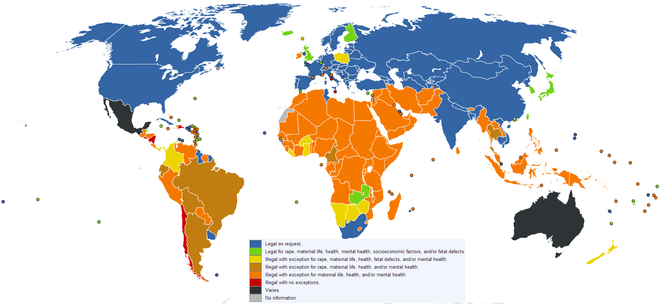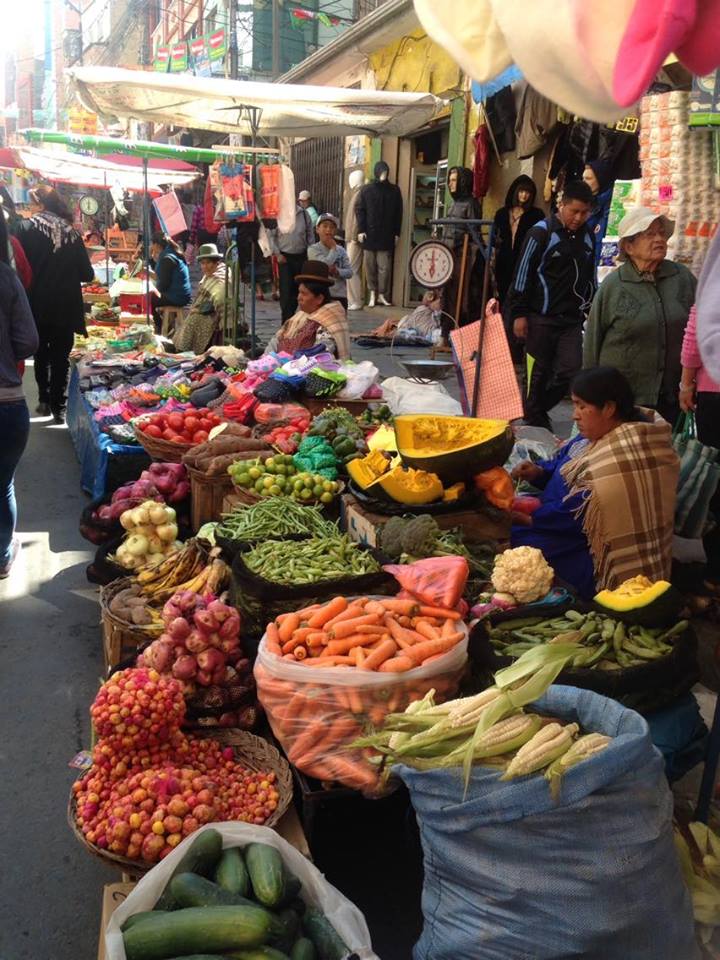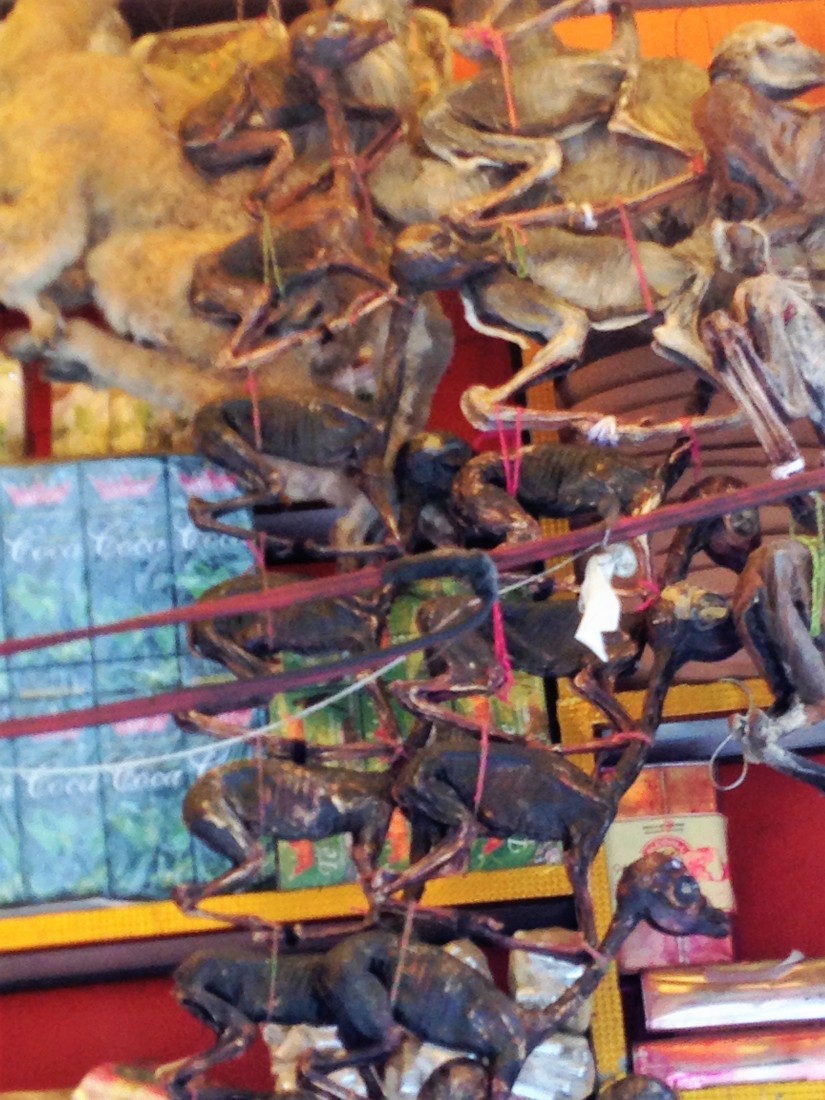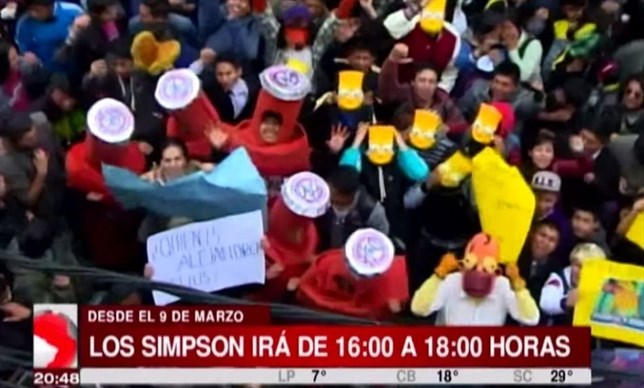Every day across the world, women are arrested, harassed, and prosecuted for having abortions. Whatever your position on the pro-choice/pro-life debate, we need to raise awareness of how aggressive and inhumane the punishments on women can be, when they reach the point where they feel that abortion is their only option.
In most of the ‘developed’ world, abortion is legalised, which means that though there are often social and financial barriers which remain set against women, they should still be able to receive a medically controlled abortion that is safe, and responsible post-abortion care, without fear of imprisonment or persecution. However, in the majority of the world, abortion is almost totally illegal. Exceptions are made in some countries in the case of rape, or if the life of the mother is at risk, however in parts of Latin America there is a total ban in all circumstances. This leads to tragic consequences for women, such as the case below.[1]
…A 28-year-old woman in the city of Santa Cruz became pregnant as the result of rape. She attempted to self-induce an abortion and ended up in the hospital with severe complications. While in the hospital, she was reported to the police authorities by her doctor, was apprehended and handcuffed on charges of illegal abortion. She spent her 10-day hospital stay under police custody and was then transferred to a prison where she subsequently spent eight months in preventive detention (IPAS, 2015).

This map shows the status of abortion laws worldwide. (Source: WHO, 2008)
Whatever their reasons, those who actively enforce policies to criminalise abortion do so in the hope that it will discourage women from seeking them, for fear of arrest or imprisonment. These laws operate in major contradiction to global human rights laws. They also intimidate trained medical professionals to not only deny women access to the decent medical services that is their human right, but incite them to turn these women in: branding patients as criminals. By doing so, vulnerable women are forced to seek expensive and dangerous illegal abortions, either through backstreet surgeons who may be untrained, or through medications that come from unregulated sources. By forcing them to behave like criminals, the upholders of laws against abortion put women in serious, even life threatening danger- every single day. The numbers of women who have to go through this are staggering- millions suffer major health complications, and it is estimated that 47,000 die every year as a consequence (IPAS, 2014). This is the ironic, and tragic result of a worldwide campaign that is allegedly ‘pro life’.
Another inevitable tragedy of this situation is the fact that it disproportionately discriminates against those who are already in a vulnerable social position: often very young, very poor, and likely uneducated women. Though it is by no means easy for middle class women, for them there are financial means to travel to somewhere where abortions can be done legally, and to see a better private surgeon or doctor- though of course, they are still subject to blackmail, abuse, and the emotional and physical trauma of the procedure itself.
For the very poorest, however, it may be impossible to scrape together money for the procedure. The options available to them are likely to be crude, brutal, and they are unlikely to receive advice or support either pre or post-abortion. They may have to borrow, and get themselves in debt, through unregulated lending- to prevent further poverty in the longer term. Many are coerced to have sexual relations with the provider in exchange for the procedure- an outrage against human decency, but sadly widely reported (Casas and Vivaldi, 2014).
Those who identify as ‘pro life’ on the grounds of their own convictions, be they based in religious, cultural, or personal moral feeling, are perfectly within their rights to hold these views. However, whatever viewpoint you might take, there is one key consideration to bear in mind when trying to justify the escalation these personal feelings to the establishment of a global political regime in which denial of abortions is part of an enforced legal framework: the criminalisation of abortion is not shown to be effective whatsoever in reducing the rates of abortion procedures taking place each year. Statistics from the World Health Organisation demonstrate this: ‘The abortion rate is 29 per 1,000 women of childbearing age in Africa and 32 per 1,000 in Latin America—regions in which abortion is illegal under most circumstances in the majority of countries. The rate is 12 per 1,000 in Western Europe, where abortion is generally permitted on broad grounds. (WHO, 2012)’ [2]
Inevitably, there are other factors associated with this that might skew the results (i.e. more widespread access to reliable contraceptives in ‘developed’ countries). However, all of these issues are relational, and a hard line conservative stance cannot be shown to have any benefit where, firstly, abortion rates will stay the same regardless of what the law dictates but secondly, because by enforcing an aggressively anti-abortion stance, ‘legal’ authorities actually put human lives at risk. In 2003, and again in 2008, WHO undertook studies which found that, in both years, ‘complications from unsafe abortion accounted for an estimated 13% of all maternal deaths worldwide’. The criminalisation of abortions therefore inherently cannot be considered pro life, when evidence proves that it necessarily endangers life.
While laws preventing abortions may have been created with the intention of preserving life, there is no compassion in forcing a woman to carry and deliver an unwanted baby- for her, or for the child. It is for this reason that, for example, Brazil has such a problem with huge numbers of homeless street children; whose chances of a decent life are stacked against them from the start. There is no compassion in forcing a woman to go through with a pregnancy when she has suffered from rape, and will never be given the chance to recover from the trauma. There is no compassion in forcing an underage girl to carry a baby she is not physically capable of delivering safely, or without extreme damage to herself or threat to her life.
On the wider scale, it is because women are forced to have unwanted children and remain trapped in an ideology of ‘natural’ womanhood that is part of a gender binary that is damaging to both sexes, that they are restricted from securing intellectual, economic, and sexual equality with men. This inequality has a very real human cost: because women are denied the right to make decisions over their own bodies and futures, too many die each day in inhumane, poverty struck circumstances- circumstances that could have been avoided had they had access to adequate healthcare and the freedom to make informed decisions.
It is for this reason that one of the key focuses in world health in our time must be to address inhumane denial of adequate reproductive health to women. Because 47,000 deaths of women a year equates to 129 women dying every day- and around one woman dying every ten minutes. Probably the time that it took you to read this blog.
There are various ways to get involved and understand more about the campaign for global abortion rights. See the list of relevant organisations below for further information.
[1] http://www.ipas.org/en/Resources/Ipas%20Publications/When-Abortion-is-a-Crime-The-threat-to-vulnerable-women-in-Latin-America.aspx
[2] WHO (2012) Facts on Induced Abortion Worldwide
List of organisations to support, and to find more information:
Abortion Rights http://www.abortionrights.org.uk/
Agrupación Ciudadana por la Despenalizacióndel Aborto Terapéutico, Ético y Eugenésico
(ACDATEE – The Citizens Coalitionfor the Decriminalisation of Therapeutic, Ethical and Eugenic Abortion) http://agrupacionciudadana.org/en/
Center for Reproductive Rights http://www.reproductiverights.org/
IPAS http://www.ipas.org/
Marie Stopes International https://mariestopes.org/
Planned Parenthood https://www.plannedparenthood.org/
Women on Waves http://www.womenonwaves.org/
I’d like to keep adding to this list so if you support, work for, or know of more pro-choice organisations please let me know and I will include them.











